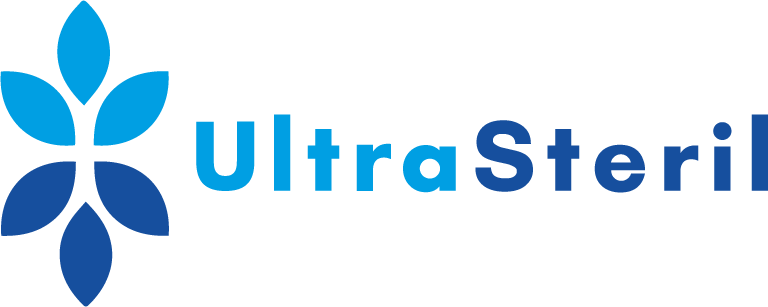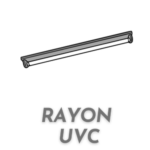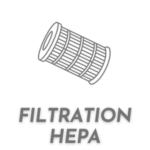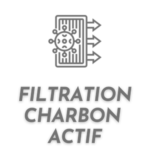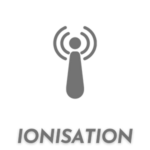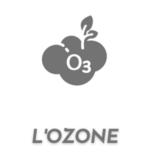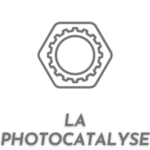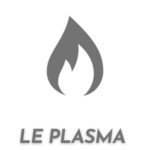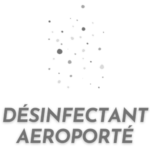The different air purification techniques
We explain all the techniques present on the air purification market,
their advantages and disadvantages.
Air purification with UV-C rays
Air purification using UVC rays is an extremely effective method with the advantage of being 100% ecological!
How does UV-C sterilization work?
UV-C light is invisible to the human eye because it is part of ultraviolet. Wavelengths of UV-C light are between 210 and 310 nanometers, however germicidal and virucidal efficacy peaks between 250 and 270 nanometers (nm).
UVC rays destroy nucleic acids by breaking down the DNA and RNA of microorganisms.
This action has the effect of rendering these micro-organisms incapable of reproducing and of infecting a host.
Maximum efficiency is reached at 254nm.
Viruses and bacteria are composed of nucleic acids (DNA/RNA) which are very sensitive to the spectrum of UV-C light , which is what allows UV-C disinfection technology to be so effective.
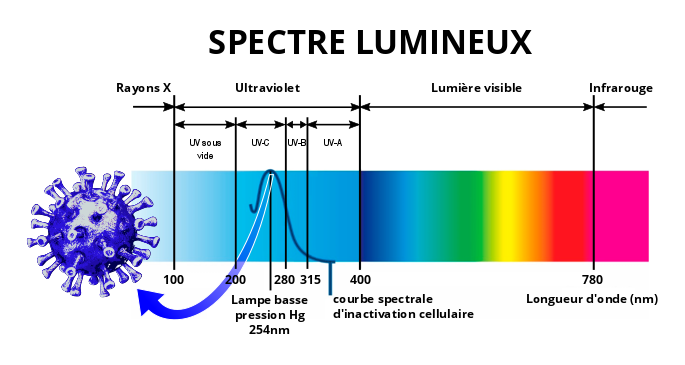
What types of pollutants are destroyed by UV-C rays?
- Viruses (including SARS-CoV2)
- bacteria
- Molds
- Mushrooms
- And other microorganisms...
The advantages and disadvantages of UV-C sterilization:
- 99.99% effective on bacteria, viruses and fungi
- Destroys pollutants instead of storing them
- Sterilizes without any chemicals
- Very fast germicidal action
- Very low maintenance cost
- Not effective on chemical pollutants
- Dangerous if misused
Costs related to UV-C sterilization:
Low purchase cost
The purchase cost of a UVC air purifier is low compared to its efficiency
Very low maintenance cost
UVC lamps have an efficiency of 9000 hours
Our opinion on UV-C sterilization:
UV-C light is our favorite air purification technique! Its efficiency is formidable!
We have purifiers that only use this technology, but, on some models , we have also coupled this technology with filters to treat more pollutants.
We offer UV-c lamp purifiers in all places where the risk of contamination is very high (Dentists, hospitals, restaurants, etc.).
Our customers are very happy with the efficiency of its purifiers. It also reassures patients, customers and staff!
Air purification with HEPA filters
Purifying the air with HEPA filters is an effective method for treating large volumes of air quickly
How does sterilization with HEPA filters work?
A HEPA filter is a high efficiency filter ( High Efficiency Particulate Air ).
A HEPA filter is capable of filtering at least 99.97% of particles with a diameter greater than 0.3µm.
They capture a wide variety of air pollutants. They filter all fine particles (up to PM0.1).
Very effective against allergens (pollen, mites) and germs (bacteria, viruses, molds, spores)
A HEPA filter is made up of interwoven natural fibers that capture particles in three different ways (inertial impaction, direct interception and Brownian diffusion).
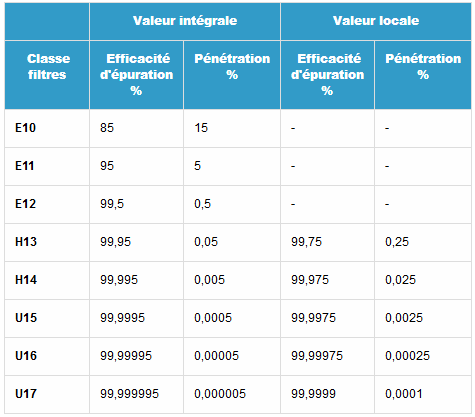
What types of pollutants are filtered by HEPA filters?
- Viruses (including SARS-CoV2)
- bacteria
- Molds
- Mushrooms
- Mites
- Pollen
- And other microorganisms...
The advantages and disadvantages of air purification with HEPA filters:
- Very effective on a wide range of pollutants
- Ability to handle large volumes of air
- Retains pollutants but does not eliminate them
- Less ecological than UV-C (filter change)
Costs related to air purifier with HEPA filter:
Low purchase cost
The cost of purchasing a HEPA air purifier is low.
Average maintenance cost
It is necessary to change the filter once or twice a year depending on use.
Our opinion on air purification with HEPA filter:
We use HEPA H13 filters. This is the best ratio between filtration performance and the flow of purified air.
We combine HEPA filters with UVC lamps which destroy viruses stored in the filter and destroy particles smaller than 0.3 µm that can pass through the HEPA filter.
We offer HEPA filter purifiers combined with UV-C in all places where the risk of contamination is high (Dentists, hospitals, restaurants, etc.). But also for people with allergies and respiratory problems.
Our customers are very happy with the efficiency of its purifiers. It also reassures patients, customers and staff!
Air purification with activated carbon filters
Air purification using activated carbon filters is an effective method for treating gaseous and aqueous pollutants.
How does sterilization with activated carbon filters work?
An activated carbon filter is a carbonaceous substance that is treated to increase its properties.
Activated carbon is obtained from wood and other plant sources. It has the particularity of capturing very small molecules.
Its very porous structure makes it very effective in retaining particles of pollution and gases.
Originally used for gas masks and in the nuclear industry for its antitoxic properties, it is now present in our buildings, our kitchens (hood) and in air filtration systems.
In Asia, where air pollution peaks are very high, it is used to make anti-pollution masks.
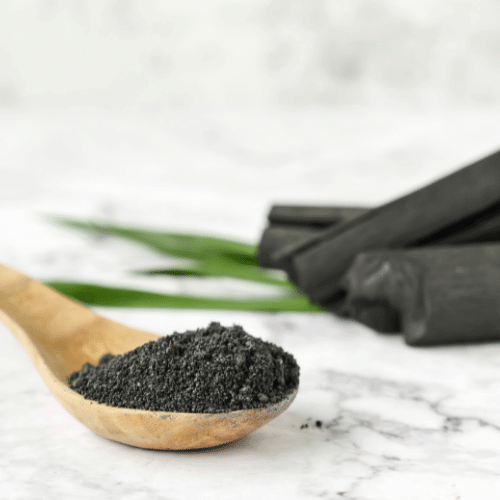
What types of pollutants are filtered by activated carbon filters?
- The smells
- Gases and fumes
- ozone
- Benzene
- Detergent
- Formaldehyde
- And many other volatile organic compounds
The advantages and disadvantages of air purification with activated carbon filters:
- Very effective on a wide range of pollutants
- Very effective on odors
- Ability to handle large volumes of air
- Retains pollutants but does not eliminate them
- Clogs quickly above 65% humidity
Costs related to air purifier with activated carbon filter:
Low purchase cost
The purchase cost of an activated carbon air purifier is low.
Low maintenance cost
It is necessary to change the filter once or twice a year depending on use.
Our opinion on air purification with activated carbon filter:
Activated carbon filters are very effective against odors and volatile organic compounds. However, it seems very important to couple it with systems that also treat viruses and bacteria. This is what we did with the Ultimair-60 and the Ultimair-100 .
We offer purifiers equipped with activated carbon filters combined with UV-C in all places where the risk of contamination is high (Dentists, hospitals, restaurants, etc.). But also in places where smells are important (kitchen, bar, cigar lounge…)
Purifiers equipped with activated carbon filters are also very useful in houses and apartments where we spend a large part of our time with often poor indoor air quality.
Air purification with ionizers
Ionization is the only active filtration method
How does ionization work?
Ionization is the action of adding or removing charges to an electrically neutral atom or molecule, which thus becomes an ion.
The ionization system will generate a large quantity of negative ions which will be attracted by the positively charged pollution particles. This will weigh the particles down and cause them to fall to the ground.
The beneficial effects of negative ions on well-being are recognized, they have a soothing and energizing effect.

What types of pollutants are treated with ionization?
- The smells
- Gases and fumes
- Fine particles
- pollen
- And many other volatile organic compounds
The advantages and disadvantages of ionization:
- Very effective on a wide range of pollutants
- Beneficial health effects
- Uses no chemicals
- Breaks down pollutants but does not eliminate them
Costs related to ionizer air purifiers:
Low purchase cost
The purchase cost of an ionizer is very low.
Very low maintenance cost
Only one wash in case of particle collector
Our opinion on air purification with an ionizer:
Ionizer purifiers are effective against most pollutants.
However, they do not store or destroy pollutants, but cause them to fall to the ground.
It seems very important to couple them with other air purification systems. This is what we did with the Ultimair-60 and the Ultimair-100 .
Ozone air purification
A dangerous but very effective gas!
How Ozone Sterilization Works
Sterilization with ozone is a simple technique which consists in diffusing a gas (O3) in a closed place thanks to a generator and letting it act.
It is necessary either to wait for it to degrade to turn into oxygen (O2) or to carry out the degradation mechanically. through the generator.
Thanks to its oxidizing power (52% more effective than chlorine), ozone destroys viruses, bacteria and odors on surfaces and in the air.
Widely used in hospitals and food laboratories for its effectiveness.
To be effective, a concentration of 10 to 20 ppm of ozone in the ambient air of the closed room is required.
Due to the dangers of exposure to ozone, the short-term professional exposure limit value (VLEP CT) is 0.2 ppm and 0.1ppm for a long period.
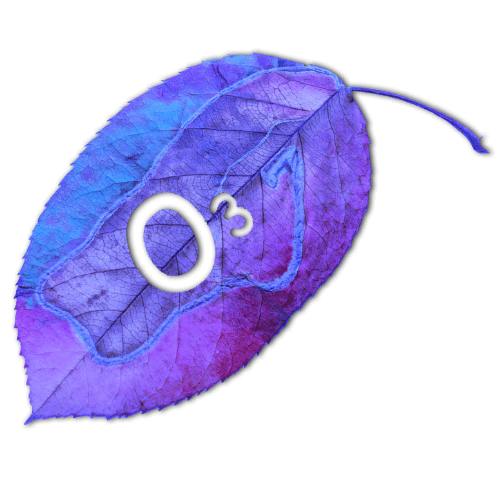
What types of pollutants are treated with ozone?
- The smells
- Viruses
- Bacteria
- the mushrooms
- And many other volatile organic compounds
The advantages and disadvantages of ozone:
- Very effective on all pollutants
- Formidable on stubborn odors
- Acts in the air and on surfaces
- Uses no chemicals
- 523% more effective than chlorine
- Very dangerous if misused
- Use with great care
- Requires trained personnel
Costs related to air purifier with ozone generator:
Low purchase cost
The purchase cost of an Ozone generator is low.
Very low maintenance cost
No maintenance required
